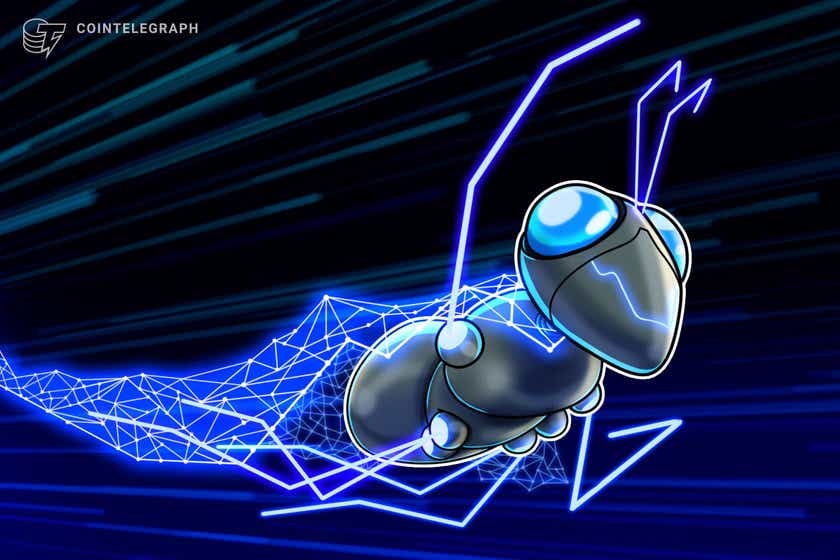New Optimism wallet lets users receive crypto via Twitter login
A new wallet that has launched on Optimism allows users to generate an address without storing seed words, and the account can be saved using an ordinary Twitter login. Called “Beam,” the wallet runs in a browser window and requires no downloads, according to a July 27 announcement from its developer. It also allows users to send transactions on Optimism without owning Ether (ETH).
INTRODUCING BEAM
The first self-custody payments wallet built for the mainstream — no download or signup required.
Beam is the easiest way on the planet to send anyone money.
Try it out with a single click
— Andy Bromberg (@andy_bromberg) July 27, 2023
Beam was developed by Eco, a payments company backed by Web3 venture capital firms Andreessen Horowitz, Coinbase Ventures, Founders Fund, Lightspeed Venture Partners and Pantera Capital.
To create a Beam wallet, the user navigates to the application’s website, which generates a unique QR code representing an Optimism address. After this, users can display their QR code to someone who wants to send them crypto. They can also click the QR code to copy the address so that it can be sent through email or instant messaging applications. The web app can be accessed from a desktop or mobile device.

To back up their wallet, users must click “save access” and log into Twitter through its application programming interface. They then click “save access” a second time and are prompted for a new password. After submitting the password, the account backup is complete, and the user can then recover their account with their Twitter login and password if their device ever crashes.
In a conversation with Cointelegraph, Eco App and Beam CEO Andy Bromberg explained that the application uses Web3Auth to back up accounts. Web3Auth is a type of new wallet technology that allows for seedless wallets to be created.
Bromberg said the password serves as a backup shard for Web3Auth, which means no hash of it is ever stored on a centralized server, implying that neither Twitter nor Eco can make unauthorized transfers on a user’s behalf.
Even though Optimism’s native coin is Ether, Beam does not require users to own ETH to pay gas fees. Instead, gas fees can be paid with the coin used in the transfer. For example, a user can send $100 in USD Coin (USDC) for $0.50 in USDC.
Related: Optimism transaction volumes surpass Abitrum’s for the first time in six months
To make this possible, the wallet broadcasts two separate transactions. The first transaction is the one the user requested, whereas the second transaction is a pledge to pay a third-party “paymaster” account if the paymaster agrees to pay gas on the user’s behalf. In the above example using USDC, the paymaster will pay $0.50 or less worth of ETH on behalf of the user and the user will simultaneously pay $0.50 of USDC to the paymaster. Bromberg told Cointelegraph that paymasters cannot take more fees than the user authorizes since the fee amount is embedded in the signature used to authorize the transaction.
According to Bromberg, using paymasters has only become possible since account abstraction was implemented in March, which allowed user-controlled wallet accounts to contain executable code for the first time.
Beam will also be released for Coinbase’s Base network when it officially launches in August. Once Base has officially launched, user balances on Base and Optimism will be added together and shown as one total within the Beam app, Bromberg stated. When a customer initiates a transaction, the Base and Optimism parts of the transaction will be broadcast simultaneously on each network, making it seem to the user as if they are interacting on a single network.
Because of this feature, Bromberg referred to Beam as a “Superchain” wallet, implying that it will interact seamlessly across the OP Stack ecosystem.
Bromberg believes Beam would reduce lousy user experiences with crypto wallets and allow ordinary people to adopt the technology:
“We’ve abstracted away chains, addresses, fees — all of it — to make it so that normal people can use it. I’ve been in crypto for 10 years now, and this is the first noncustodial product that my parents have ever been able to use, and I have tried many times before, and this did it. So we’re excited about it.”
Beam isn’t the only wallet app that aims to simplify crypto onboarding. Kresus wallet, launched on May 11, allows users to sign up with just an email address. On May 8, Worldcoin launched a wallet that allows gas-free transactions for any users that prove their humanness through its protocol.









